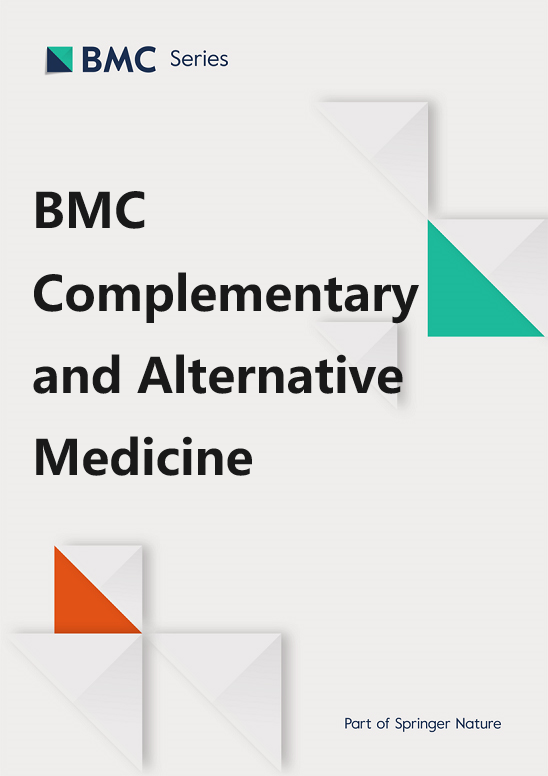综合网络药理学和代谢组学揭示半夏抑制非小细胞肺癌细胞的机制
IF 3.4
2区 医学
Q1 Medicine
引用次数: 0
摘要
肺癌是一种具有高度异质性的恶性肿瘤。一种经典中药--半夏(PT)被证明对肺癌细胞有治疗作用。然而,人们对其化学成分和药理作用还不甚了解。本研究旨在通过代谢组学和网络药理学揭示半夏治疗肺癌细胞的机制。通过对两株经半夏提取物(PTE)处理的肺癌细胞进行代谢组学分析,鉴定出差异丰富的代谢物,并通过MetaboAnalyst鉴定出与DEGs相关的代谢通路。然后,应用网络药理学鉴定了针对 PTE 诱导的肺癌细胞的潜在靶点。基于Cytoscape构建了代谢组学和网络药理学的整合网络。PTE明显抑制了A549和NCI-H460细胞的增殖、迁移和侵袭。细胞代谢组学分析结果表明,30种代谢物在实验组和对照组肺癌细胞中存在差异表达。通过通路富集分析,发现5种代谢物参与了嘌呤代谢、核黄素代谢和磷酸戊糖通路,包括D-核糖-5-磷酸、黄嘌呤核苷、5-氨基-4-咪唑羧酰胺、黄素单核苷酸(FMN)和黄素腺嘌呤二核苷酸(FAD)。结合网络药理学,在 PT 中发现了 11 种生物活性化合物,并构建了生物活性化合物-靶基因-代谢酶-代谢物的相互作用网络。总之,这项研究揭示了 PT 抗肺癌的复杂机制。我们的工作为确定天然化合物药理作用的潜在机制提供了一个新的范例。本文章由计算机程序翻译,如有差异,请以英文原文为准。
Integrated network pharmacology and metabolomics to reveal the mechanism of Pinellia ternata inhibiting non-small cell lung cancer cells
Lung cancer is a malignant tumor with highly heterogeneous characteristics. A classic Chinese medicine, Pinellia ternata (PT), was shown to exert therapeutic effects on lung cancer cells. However, its chemical and pharmacological profiles are not yet understood. In the present study, we aimed to reveal the mechanism of PT in treating lung cancer cells through metabolomics and network pharmacology. Metabolomic analysis of two strains of lung cancer cells treated with Pinellia ternata extracts (PTE) was used to identify differentially abundant metabolites, and the metabolic pathways associated with the DEGs were identified by MetaboAnalyst. Then, network pharmacology was applied to identify potential targets against PTE-induced lung cancer cells. The integrated network of metabolomics and network pharmacology was constructed based on Cytoscape. PTE obviously inhibited the proliferation, migration and invasion of A549 and NCI-H460 cells. The results of the cellular metabolomics analysis showed that 30 metabolites were differentially expressed in the lung cancer cells of the experimental and control groups. Through pathway enrichment analysis, 5 metabolites were found to be involved in purine metabolism, riboflavin metabolism and the pentose phosphate pathway, including D-ribose 5-phosphate, xanthosine, 5-amino-4-imidazolecarboxyamide, flavin mononucleotide (FMN) and flavin adenine dinucleotide (FAD). Combined with network pharmacology, 11 bioactive compounds were found in PT, and networks of bioactive compound–target gene–metabolic enzyme–metabolite interactions were constructed. In conclusion, this study revealed the complicated mechanisms of PT against lung cancer. Our work provides a novel paradigm for identifying the potential mechanisms underlying the pharmacological effects of natural compounds.
求助全文
通过发布文献求助,成功后即可免费获取论文全文。
去求助
来源期刊

BMC Complementary and Alternative Medicine
INTEGRATIVE & COMPLEMENTARY MEDICINE-
CiteScore
7.00
自引率
0.00%
发文量
0
审稿时长
3 months
期刊介绍:
BMC Complementary Medicine and Therapies is an open access journal publishing original peer-reviewed research articles on interventions and resources that complement or replace conventional therapies, with a specific emphasis on research that explores the biological mechanisms of action, as well as their efficacy, safety, costs, patterns of use and/or implementation.
 求助内容:
求助内容: 应助结果提醒方式:
应助结果提醒方式:


